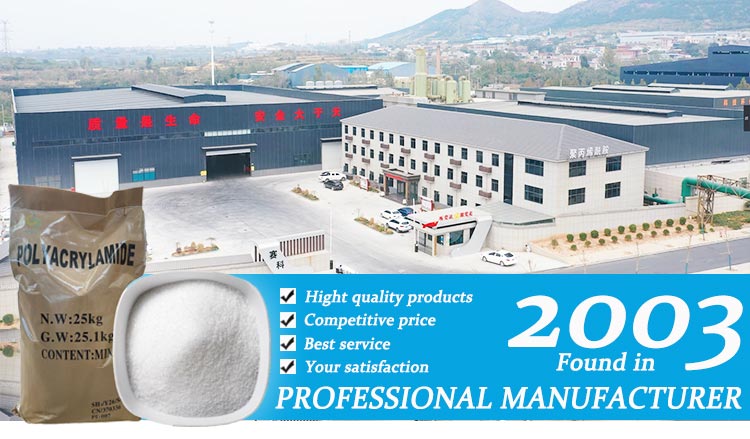Polyacrylamide (PAM) is widely used as a high-efficiency flocculant in textile dyeing wastewater treatment.

Proper selection of PAM type significantly impacts treatment efficiency and operational costs. Below are the key considerations:
I. Selection Criteria
Ionic Type Selection
Cationic PAM (CPAM): Suitable for negatively charged dyes (e.g., reactive dyes, acid dyes) and colloidal organic matter. Works via charge neutralization and adsorption bridging.
Anionic PAM (APAM): Effective in neutral or weakly alkaline wastewater, often combined with inorganic coagulants (e.g., PAC) to enhance flocculation.
Non-ionic PAM (NPAM): Used in high-salinity or pH-fluctuating wastewater, relying on molecular chain adsorption (less common).
Molecular Weight (MW) Selection
High MW (>12 million): Ideal for high-turbidity wastewater with suspended solids, promoting rapid settling.
Medium/Low MW (<8 million): Better for soluble organic matter (e.g., COD removal), often paired with oxidation processes.
Wastewater Characteristics
pH: CPAM performs best under acidic conditions, while APAM works well at pH 7–9.
Dye Type: Azo dyes (negatively charged) respond well to CPAM; disperse dyes may require APAM+PAC combinations.
II. Treatment Performance
Pollutant Removal Efficiency
COD Removal: 50–70% when combined with coagulation; refractory organics need further biological treatment.
Color Removal: CPAM achieves >90% removal for reactive dye wastewater.
Suspended Solids (SS): Reduces SS to <30 mg/L with optimized flocculation.
Process Optimization
Dosage: Typically 0.5–10 mg/L; overdosing may cause colloid restabilization (jar testing recommended).
Dissolution & Mixing: Prepare 0.1–0.5% solution; avoid high-speed stirring to prevent chain breakage.
Synergistic Effects: Combining with PAC or ferrous sulfate can reduce PAM usage by 30–50%.
III. Common Issues & Solutions
Small Flocs: May indicate low MW or charge mismatch—adjust ionic type or add coagulant aids.
Slow Settling: Check pH (e.g., CPAM works best at pH 4–6).
Residual Monomer Risk: Use high-quality PAM (acrylamide monomer content <0.05%).
IV. Case Study
A textile plant treating reactive dye wastewater:
Process: pH adjustment to 5 → PAC (200 mg/L) → CPAM (5 mg/L, MW 15 million).
Results: Color reduced from 500× to 20×; COD decreased from 800 mg/L to 250 mg/L.
V. Future Trends
Modified PAM: e.g., amphoteric PAM for complex wastewater.
Green Alternatives: Bio-enzymes or natural polymer composites to minimize secondary pollution.
Note: Lab tests (e.g., zeta potential, jar tests) are essential for optimal selection. CPAM can also serve as a sludge dewatering agent.
If you are interested in our products or have any questions, please fill in the form below. We will contact you immediately after receiving it. Thank you for your choice